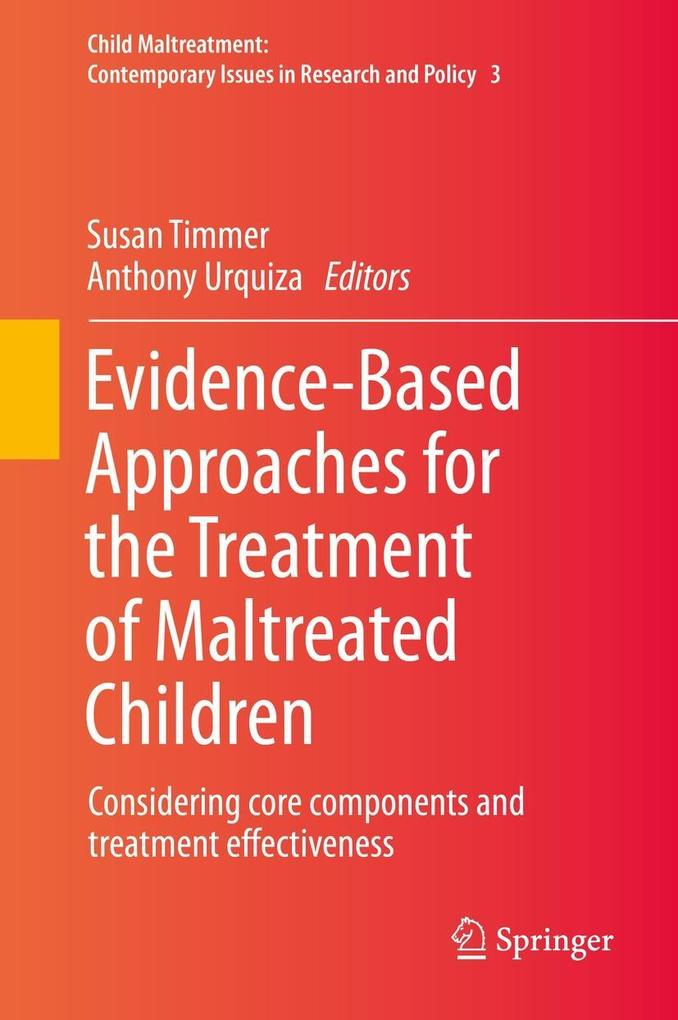
Sofort lieferbar (Download)
This volume provides an overview of the research describing the effects of child maltreatment on mental health, cognitive and social-emotional development. It offers descriptions of selected empirically based treatments (EBTs) written by scholars associated with its development, training, or research on its effectiveness. Each contributor presents the theoretical foundation of the EBT and evidence of its efficacy, describes the treatment process and illustrates this process with a case study of its use with a maltreated child, and discusses possible limitations. Following the chapters describing the interventions, the editors address key issues of the dissemination and implementation of these EBTs. They describe the strategies the selected interventions have used to ensure treatment fidelity in training and dissemination from the perspective of implementation science's core components of implementation. The challenges of implementing EBTs, and the difficulty of fitting protocol to the reality of clinical practice in community mental health settings are also discussed. This volume offers a central source of information for students and practitioners who are seeking effective interventions to address problems associated with child maltreatment.
Inhaltsverzeichnis
PART I. INTRODUCTION. - Chapter 1: A Brief History of Identifying Child Maltreatment; Nicole Hollis. - Chapter 2: A Brief History of Evidence-Based Practices; Lindsay A. Forte, Susan G. Timmer and Anthony J. Urquiza. - Chapter 3: Why we think we can make things better with Evidence Based Practices: Theoretical and Developmental Context; Susan G. Timmer. - PART II. INTERVENTIONS FOR INFANTS AND TODDLERS. - Chapter 4: Attachment and Biobehavioral Catch-up: An Intervention for Parents at Risk of Maltreating Their Infants and Toddlers; Mary Dozier, E. B. Meade and Kristen Bernard. - Chapter 5: Child-Parent Psychotherapy with Infants and Very Young Children; Patricia Van Horn and Vilma Reyes. - PART III. INTERVENTIONS YOUNG CHILDREN. - Chapter 6: Incredible Yearsâ Parent and Child Programs for Maltreating Families; Carolyn Webster-Stratton. - Chapter 7: The Importance of Evidence-Based Parenting Intervention to the Prevention and Treatment of Child Maltreatment; Matthew R. Sanders and John A. Pickering. - Chapter 8: Parent Child Interaction Therapy for Maltreated Children; Anthony J. Urquiza and Susan G. Timmer. - Chapter 9: Multidimensional Treatment Foster Care For Preschoolers: A Program for Maltreated Children in the Child Welfare System; Kathryn S. Gilliam and Philip A. Fisher. - PART IV. INTERVENTIONS FOR MIDDLE CHILDHOOD. - Chapter 10: Trauma-Focused Cognitive-Behavioral Therapy; Anthony P. Mannarino, Judith A. Cohen and Esther Deblinger. - Chapter 11: Alternatives for Families: A Cognitive Behavioral Therapy: An Overview and Case Example; David J. Kolko, Heather Simonich and Anna Loiterstein. - PART V. INTERVENTIONS FOR ADOLESCENTS. - Chapter 12: MST-CAN: An Ecological Treatment for Families Experiencing Physical Abuse and Neglect; Cynthia Cupit Swenson and Cindy M. Schaeffer. - Chapter 13: Dialectical Behavior Therapy for Suicidal and Self-Harming Adolescents with Trauma Symptoms; Michele Berk, Janine Shelby, Claudia Avina and Keegan Tangeman. - PART VI. DISSEMINATINGEVIDENCE-BASED PRACTICES. - Chapter 14: Taking it to the Street: Disseminating Evidence-Based Practices; Susan G. Timmer and Anthony J. Urquiza. - Chapter 15: The Bridge from Research to Practice- Just Leap across the Last Bit; Susan G. Timmer and Anthony J. Urquiza.
Produktdetails
Erscheinungsdatum
29. November 2013
Sprache
englisch
Seitenanzahl
302
Dateigröße
2,80 MB
Reihe
Child Maltreatment
Herausgegeben von
Susan Timmer, Anthony Urquiza
Verlag/Hersteller
Kopierschutz
mit Wasserzeichen versehen
Produktart
EBOOK
Dateiformat
PDF
ISBN
9789400774049
Entdecken Sie mehr
Pressestimmen
From the reviews:
This is an excellent discussion of evidence-based interventions for maltreated children from infancy through adolescence. It is easy to read and practical, written by experts in field. The book provides readers with useful information so they can make decisions about treatment for their clients. (Gary B. Kaniuk, Doody s Book Reviews, May, 2014)Bewertungen
0 Bewertungen
Es wurden noch keine Bewertungen abgegeben. Schreiben Sie die erste Bewertung zu "Evidence-Based Approaches for the Treatment of Maltreated Children" und helfen Sie damit anderen bei der Kaufentscheidung.









